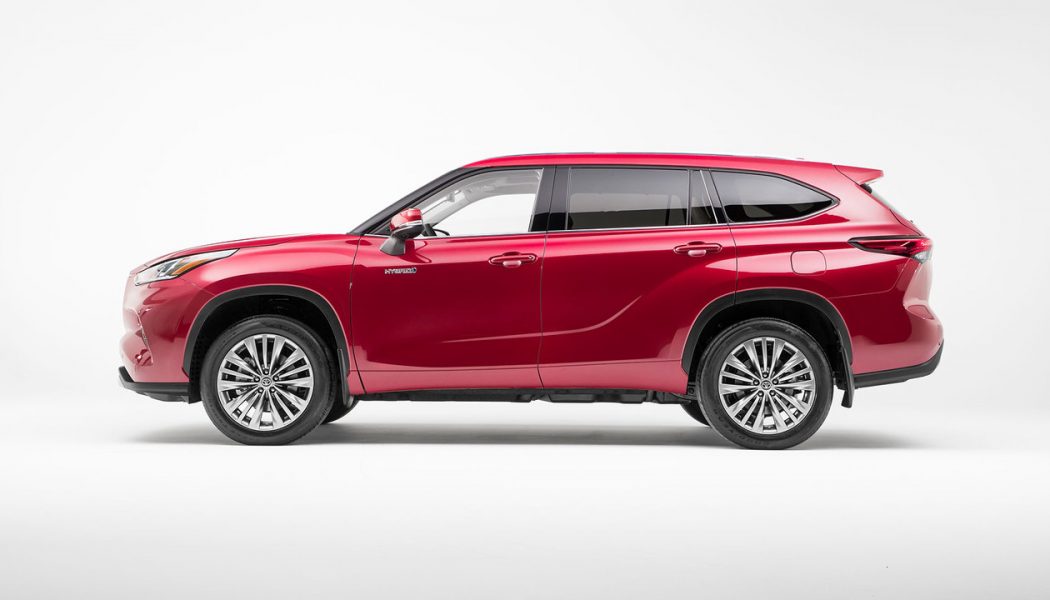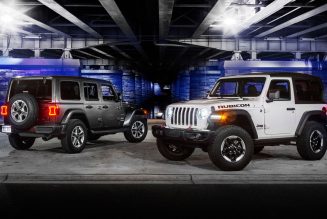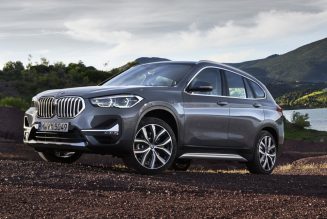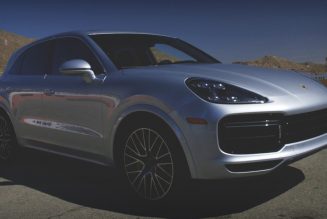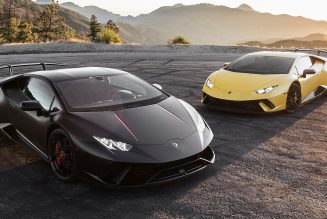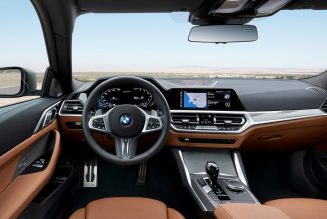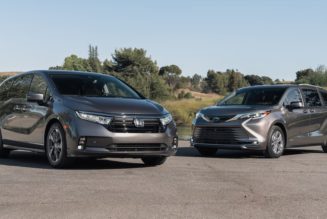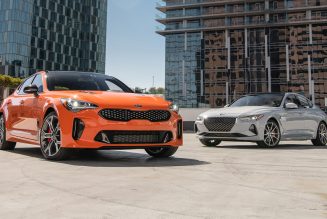Toyota Highlander Full Overview
The Toyota Highlander is known for being a reliable, good-looking three-row SUV, but among the list of adjectives used to describe it, sporty is not on our list. New for 2021 is the Highlander XSE, which swaps its elegant lines for a more dynamic appearance. With a unique grille, fascia, lower spoiler, wheels, and blackened details like the mirror caps and fake air vents, the XSE distinguishes itself from the rest of the Highlander lineup. But the XSE is more than a badge and an appearance package—Toyota engineers made changes under the skin to deliver a more connected driving experience. Among those trades are stiffer spring rates, a thicker anti-roll bar, and retuned shock absorbers, while the steering feel is more pronounced.
Earlier this year we tested a 2021 Highlander XSE but couldn’t notice any major differences between the regular three-row SUV and the new trim. To get a better perspective, we asked Toyota to lend us the XSE back along with an XLE—the most popular Highlander trim—for a back-to-back comparison.
How Sporty is Sporty?
Usually, we associate the word sporty with extra power and dynamic handling, but that’s not the case here. All Highlanders—regardless of the trim—are powered by a 295-hp, 263 lb-ft 3.5-liter V-6 mated to an eight-speed transmission. Our XSE and XLE both came with the optional all-wheel drive system, which can send up to 50 percent of the torque to the rear wheels. Besides the suspension and steering settings, the XSE comes with stickier tires and 20-inch wheels (instead of 18s).
Driving the Highlanders back-to-back exposed the difference we didn’t see earlier in the year. Compared to the XLE, the XSE’s steering felt a bit more weighted, but short of what we’d describe as sporty. The difference was like turning Sport mode on—the XSE felt more alert while the XLE seemed to be in comfort mode all the time. The response was a bit sharper and better balanced and provided a tad more feedback than the XLE. Still, it wasn’t a night and day difference, as the XSE’s steering is still tuned to on the comfort side of the spectrum.
The case is the same with the ride. On our test loop that mingles through curvy roads, broken pavement and highway portions, the Highlander XSE’s body felt a bit more controlled than the XLE. On the broken pavement, the XSE’s suspension felt like it was tuned to work in a one-and-done fashion versus trying to dissipate the vibrations in the cabin in a cushier way, like we felt in the XLE. On twisty roads, the XSE felt sharper, more controlled and a tad grippier—the latter mostly because of the Goodyear Eagle Touring tires compared to the XLE’s Michelin Premier LTX. Ride quality wasn’t impacted by the XSE’s bigger wheels.
At our track in Fontana, California, the pair felt pretty close to each other in our acceleration and handling tests. In the 0-60 mph run and the quarter mile, the XLE was 0.1 second faster, but on our braking test the XSE’s tires showed off, stopping in 116 ft compared to 122 ft for the XLE. “Similar feel to the XLE: Lots of front dive, softly sprung front suspension,” said associate road test editor Erick Ayapana after driving them back-to-back.
Things were minimally different on the skid pad as well, where road test editor Chris Walton managed to shave 0.2 second in the XSE for a time of 26.5-seconds at 0.65 g (the XLE took 26.7 seconds at 0.64 g). “Lots of body roll in the corners, and the steering seems heavy for heavy’s sake. The transmission wasn’t very intelligent on the skid pad, so I had to downshift manually,” said Walton on the XLE. His feelings were almost replicated in the XSE, noting the same foibles as in the XLE but less so. “There’s still quite a lot of dive and roll, but not as severe. The transmission behaves the same, and perhaps the tires are a little sportier, so it was easier to brake in the same spot consistently,” he added.
So, how sporty is sporty? The Highlander XSE falls short of what we’d call sporty or spirited. But like Walton said after driving the XSE on the skid pad, “this is how the regular Highlander should be.” The stiffer springs and weighted steering help it keep its body under control when driving aggressively, and still have that level of comfort that the three-row Toyota is known for.
Are the Interiors Different?
Similar to the exterior, the cabins are a bit different. The biggest change is the red leatherette in the XSE, which you can choose at no cost. (On a side note, the red leatherette only covers the first and second rows; the third row gets black seats.) If you prefer something more traditional, black leatherette seats are also standard, which is how our model came equipped. Faux carbon-fiber trim can be seen across the dashboard. The XLE, on the other hand, trades the red leatherette for a premium appeal, especially with the Harvest Beige interior, which combines beige and brown materials. And instead of getting the fake carbon-fiber, the XLE gets a shiny gray plastic.
The other minor difference inside is the design of the Multi-Terrain selector, which is controlled by a knob in the XSE instead of buttons like in the XLE. Both SUVs have the same three modes—Mud & Sand, Normal, and Rock & Dirt—only the way to select them is different.
Opting for the XLE allows you to choose between a seven- or eight-passenger interior at no cost; the XSE arrives with seven seats only.
Everything else is the same across the board. Both SUVs come with five USB ports (three in the front row, two in the second row) and an 8.0-inch touchscreen with Apple CarPlay and Android Auto. The XSE is available with navigation and a JBL premium audio system (a $1,680 option), while the XLE offers navigation and a premium audio option (no JBL speakers) for $1,040. Both systems sounded good; we didn’t notice any major difference between them.
Interior space is the same in both Highlanders, with the third row feeling cramped for adults. Recently, Toyota trademarked the “Grand Highlander” name, which means we might see a bigger three-row SUV soon, which could amplify interior space.
Which Highlander Should I Buy?
The XSE is positioned between the XLE and Limited grades, which means it starts at $42,680 while the XLE is priced at $41,085. All-wheel drive is an extra $1,950 for either model. Our XLE, which only added the navigation and audio package, crossed the checkout counter at $43,625. Our XSE added the JBL package and other accessories like the cargo cross bars on the roof, all-weather floor mats, and illuminated door sills (among others) that increased its price to $47,451.
In the end, it all comes down to the looks and practicality. If you think the Highlander’s design is boring, the XSE definitely brings more emotion. But if your budget is tighter, the XLE is a good option. The stiffer suspension and steering settings likely won’t affect your decision, as the experience behind the wheel is virtually the same when either Highlander is not pushed to its limits, something the vast majority of owners will stay away from.
If it were our money, we’d probably go with the XSE, as we prefer its handling on the road and its stickier tires. We’d rather have the XLE’s exterior design, but we’d get the red leatherette seats if we were buying the XSE. We can’t have the best of both worlds here, but we’re glad Toyota is giving customers more options to choose from.
| POWERTRAIN/CHASSIS | 2021 Toyota Highlander XLE AWD | 2021 Toyota Highlander XSE AWD |
| DRIVETRAIN LAYOUT | Front-engine, AWD | |
| ENGINE TYPE | Atkinson-cycle 60-deg V-6, alum block/heads | |
| VALVETRAIN | DOHC, 4 valves/cyl | |
| DISPLACEMENT | 210.9 cu in/3,456 cc | |
| COMPRESSION RATIO | 11.8:1 | |
| POWER (SAE NET) | 295 hp @ 6,600 rpm | |
| TORQUE (SAE NET) | 263 lb-ft @ 4,700 rpm | |
| REDLINE | 6,750 rpm | |
| WEIGHT TO POWER | 14.7 lb/hp | 14.9 lb/hp |
| TRANSMISSION | 8-speed automatic | |
| AXLE/FINAL-DRIVE RATIO | 3.00:1/2.02:1 | |
| SUSPENSION, FRONT; REAR | Struts, coil springs, anti-roll bar; multilink, coil springs, anti-roll bar | |
| STEERING RATIO | 14.2:1 | |
| TURNS LOCK-TO-LOCK | 2.8 | |
| BRAKES, F; R | 13.3-in vented disc; 13.3-in disc, ABS | |
| WHEELS | 8.0 x 18-in cast aluminum | 8.0 x 20-in cast aluminum |
| TIRES | 235/65R18 106V Michelin Premier LTX (M+S) | 235/55R20 102V Goodyear Eagle Touring (M+S) |
| DIMENSIONS | ||
| WHEELBASE | 112.2 in | |
| TRACK, F/R | 65.3/65.4 in | |
| LENGTH x WIDTH x HEIGHT | 194.9 x 76.0 x 68.1 in | |
| GROUND CLEARANCE | 8.0 in | |
| APPRCH/DEPART ANGLE | 17.9/23.0 deg | |
| TURNING CIRCLE | 37.4 ft | |
| CURB WEIGHT (F/R DIST) | 4,341 lb (56/44%) | 4,394 lb (55/45%) |
| TOWING CAPACITY | 5,000 lb | |
| SEATING CAPACITY | 7 | 6 |
| HEADROOM, F/M/R | 38.4/39.4/36.1 in | |
| LEGROOM, F/M/R | 40.4/41.0/27.7 in | |
| SHOULDER ROOM, F/M/R | 59.0/58.7/55.0 in | |
| CARGO VOLUME, BEH F/M/R | 84.3/48.4/16.0 cu ft | |
| TEST DATA | ||
| ACCELERATION TO MPH | ||
| 0-30 | 2.4 sec | 2.4 sec |
| 0-40 | 3.8 | 3.9 |
| 0-50 | 5.2 | 5.4 |
| 0-60 | 6.8 | 6.9 |
| 0-70 | 9.2 | 9.4 |
| 0-80 | 11.6 | 12.0 |
| 0-90 | 14.3 | 14.6 |
| PASSING, 45-65 MPH | 3.5 | 3.6 |
| QUARTER MILE | 15.3 sec @ 92.8 mph | 15.4 sec @ 92.6 mph |
| BRAKING, 60-0 MPH | 122 ft | 116 ft |
| LATERAL ACCELERATION | 0.82 g (avg) | 0.86 g (avg) |
| MT FIGURE EIGHT | 26.7 sec @ 0.64 g (avg) | 26.5 sec @ 0.65 g (avg) |
| TOP-GEAR REVS @ 60 MPH | 1,500 rpm | |
| CONSUMER INFO | ||
| BASE PRICE | $42,860 | $44,805 |
| PRICE AS TESTED | $43,900 | $47,726 |
| AIRBAGS | 8: Dual front, front side, driver knee, front-pass thigh, f/m/r curtain | |
| BASIC WARRANTY | 3 yrs/36,000 miles | |
| POWERTRAIN WARRANTY | 5 yrs/60,000 miles | |
| ROADSIDE ASSISTANCE | 2 yrs/25,000 miles | |
| FUEL CAPACITY | 17.9 gal | |
| EPA CITY/HWY/COMB ECON | 20/27/23 mpg | |
| ENERGY CONS, CITY/HWY | 169/125 kWh/100 miles | |
| CO2 EMISSIONS, COMB | 0.86 lb/mile | |
| RECOMMENDED FUEL | Unleaded regular | |
